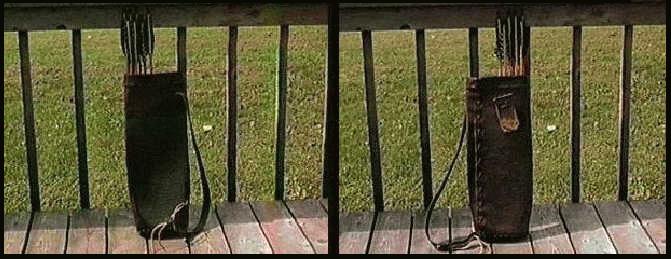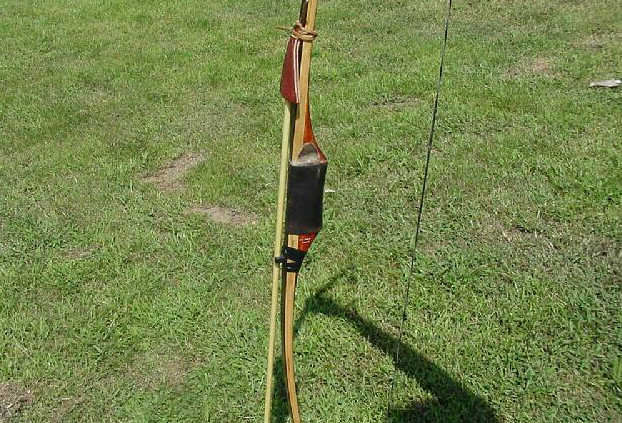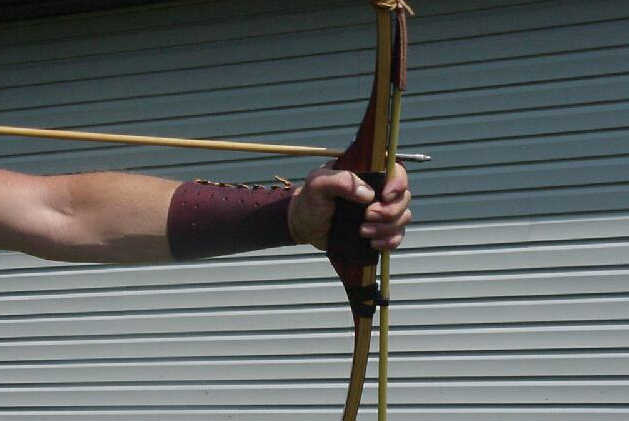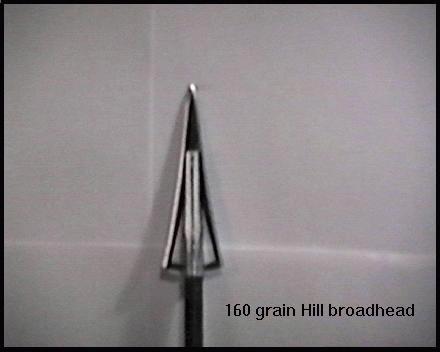
Many archers find choosing a quiver to be the most difficult
piece of equipment to select. I do not believe the perfect quiver has
yet been invented. However, for all around versatility the single
strap shoulder quiver comes close. The trick to using these quivers
effectively is to properly make and correctly adjust them, and then
to practice using them. If properly made and adjusted, they hold a
large supply of assorted arrows quietly, and arrows can be extracted
very quickly. I would recommend when making these quivers to lace
rather than stitch. Although stitched quivers are very attractive,
repairing them and adjusting them can be difficult. A good heavy
latigo leather shoulder quiver will last a life time with proper care
and usually the only repair ever needed is to occasionally replace
the lacing. In addition to the shoulder quiver, I use a single arrow
broadhead hood and rubber arrow clamp attached to my bow to carry that
first shot arrow. The two compliment one another very nicely.



The broadhead is the most important piece of equipment the
hunting archer takes to the field with him. Afterall, it is the broadhead
that does the actual work, the bow and arrow being but delivery
systems for the hunting head. Two of the most critical attributes of a
properly designed head are their ability to give accurate flight in all
hunting conditions and to give maximum penetration. Other qualities that
should be considered are quality and temper of metal, ease of sharpening
in the field, durablity, and ease of removing and replacing arrow in
hunting quiver. There are many excellent broadheads available today but
it has been my experience that the original Hill design best satisfies all
of the mentioned attributes necessary for maximum performance. I am
convinced that the concave blade provides the most efficient cutting
shape. Couple a concave blade with a properly
file sharpened
edge and you have a broadhead unequalled in any other design. The two
broadheads I use that fit these parameters are the Hill head and a slightly
modified 190 grain Ribtek head.


